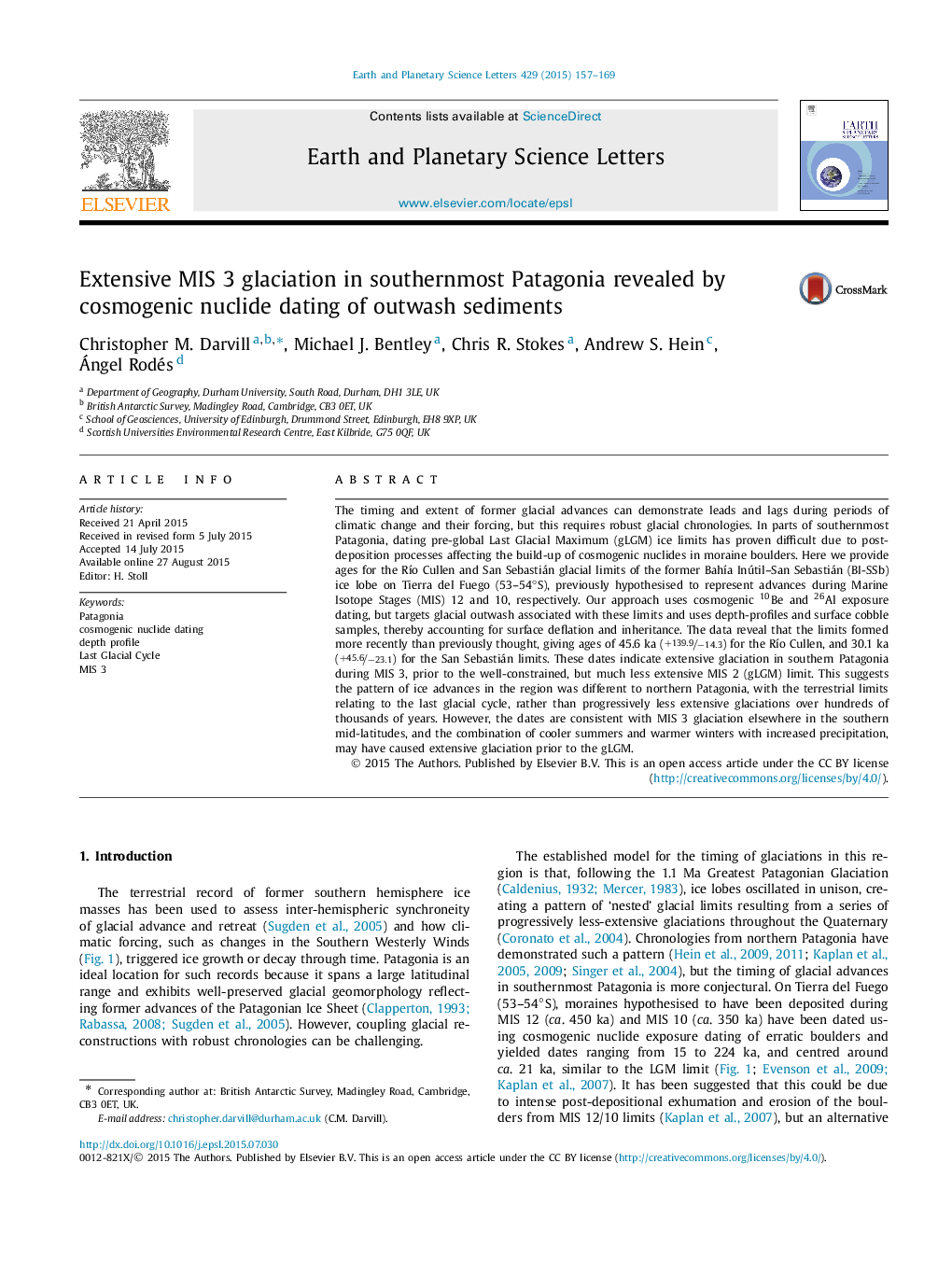| کد مقاله | کد نشریه | سال انتشار | مقاله انگلیسی | نسخه تمام متن |
|---|---|---|---|---|
| 6428194 | 1634727 | 2015 | 13 صفحه PDF | دانلود رایگان |

- Record of ice lobe advances on Tierra del Fuego, southern South America.
- 10Be and 26Al depth profiles used to date outwash associated with glacial limits.
- Demonstrates glacial advances at ca. 45.6 ka and 30.1 ka.
- Glacial limits are found to be significantly younger than previously thought.
- Indicates extensive glaciation during MIS 3, prior to less extensive global LGM.
The timing and extent of former glacial advances can demonstrate leads and lags during periods of climatic change and their forcing, but this requires robust glacial chronologies. In parts of southernmost Patagonia, dating pre-global Last Glacial Maximum (gLGM) ice limits has proven difficult due to post-deposition processes affecting the build-up of cosmogenic nuclides in moraine boulders. Here we provide ages for the RÃo Cullen and San Sebastián glacial limits of the former BahÃa Inútil-San Sebastián (BI-SSb) ice lobe on Tierra del Fuego (53-54°S), previously hypothesised to represent advances during Marine Isotope Stages (MIS) 12 and 10, respectively. Our approach uses cosmogenic 10Be and 26Al exposure dating, but targets glacial outwash associated with these limits and uses depth-profiles and surface cobble samples, thereby accounting for surface deflation and inheritance. The data reveal that the limits formed more recently than previously thought, giving ages of 45.6 ka (+139.9â14.3) for the RÃo Cullen, and 30.1 ka (+45.6â23.1) for the San Sebastián limits. These dates indicate extensive glaciation in southern Patagonia during MIS 3, prior to the well-constrained, but much less extensive MIS 2 (gLGM) limit. This suggests the pattern of ice advances in the region was different to northern Patagonia, with the terrestrial limits relating to the last glacial cycle, rather than progressively less extensive glaciations over hundreds of thousands of years. However, the dates are consistent with MIS 3 glaciation elsewhere in the southern mid-latitudes, and the combination of cooler summers and warmer winters with increased precipitation, may have caused extensive glaciation prior to the gLGM.
220
Journal: Earth and Planetary Science Letters - Volume 429, 1 November 2015, Pages 157-169